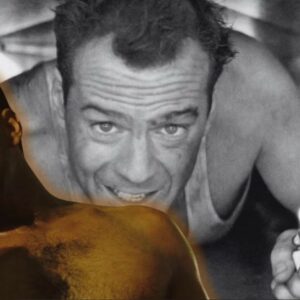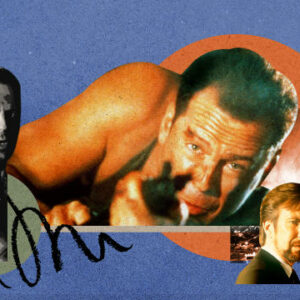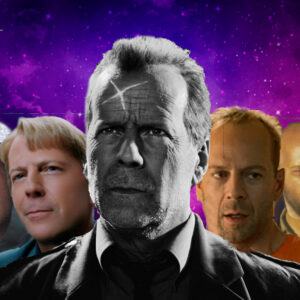Introduction to the Film and Character
In 2013, Kill Your Darlings burst onto the cinematic scene, captivating audiences with its compelling narrative centered around the birth of the Beat Generation. Directed by John Krokidas, the film intricately weaves a tale of youthful rebellion, intellectual exploration, and tragic consequences. At the heart of this narrative is the character of Allen Ginsberg, portrayed by the talented Daniel Radcliffe. Ginsberg, an icon of 20th-century literature, is known for his raw and honest poetry, which challenged societal norms and explored the depths of human experience.
Set against the backdrop of the late 1940s, a period marked by post-war disillusionment and burgeoning counterculture, Kill Your Darlings chronicles Ginsberg’s time at Columbia University. Here, he forms profound connections with fellow literary luminaries such as Jack Kerouac and William S. Burroughs. Radcliffe’s portrayal of Ginsberg offers a fascinating glimpse into the poet’s early years, revealing his struggles with identity, sexuality, and artistic ambition. The era’s intellectual ferment and the characters’ quest for authenticity resonate powerfully through Radcliffe’s performance, bringing Ginsberg’s complexities to life.
Influence of Personal Style
Radcliffe’s journey to embody Ginsberg was not merely a matter of memorizing lines and adopting a specific accent; it also involved a nuanced understanding of the character’s personal style. While Ginsberg is often associated with his iconic glasses and bohemian attire, Radcliffe’s interpretation reflects a deeper connection between his own personal style and that of Ginsberg. The young actor, having shed his Harry Potter persona, sought to embrace a more eclectic, intellectual aesthetic that mirrored the Beat ethos.
In the lead-up to filming, Radcliffe’s fashion choices began to shift. He opted for vintage-inspired clothing, incorporating elements that would evoke the mid-20th century. This subtle transformation laid the groundwork for a more authentic portrayal of Ginsberg, allowing Radcliffe to feel comfortable in the character’s skin while maintaining his unique flair. The authenticity that Radcliffe brought to the role can be traced back to his ability to blend his own style with that of Ginsberg, enhancing the character’s relatability.
Styling Choices and Character Depth
The wardrobe choices in Kill Your Darlings are not merely aesthetic decisions; they serve to deepen the audience’s understanding of Ginsberg’s character. Each outfit Radcliffe dons reflects different facets of Ginsberg’s personality, from his intellectual curiosity to his rebellious spirit. The film’s costume designer, Arianne Phillips, played a crucial role in this transformation, crafting outfits that encapsulated the essence of the Beat Generation while also allowing Radcliffe to express his interpretation of Ginsberg.
One of the most striking elements of Radcliffe’s wardrobe is the use of layered clothing. Ginsberg often wears a combination of sweaters, collared shirts, and loose trousers, which not only speaks to the bohemian aesthetic of the time but also highlights his intellectualism. The layers signify Ginsberg’s complexity—his thoughts and emotions are multi-faceted, and his clothing choices reflect that. By choosing to portray Ginsberg in comfortable, somewhat disheveled attire, Radcliffe emphasizes the poet’s struggles with self-identity and the societal constraints he sought to challenge.
Additionally, the iconic round glasses Ginsberg wears become a powerful symbol in Radcliffe’s portrayal. These glasses are not merely a fashion statement; they represent Ginsberg’s worldview and his quest for insight. When Radcliffe dons the glasses, he transforms into a figure who sees the world through a unique lens—one that seeks to uncover the truth beneath the surface. This visual cue enhances the audience’s connection to Ginsberg, inviting them to experience the world as he does.
Radcliffe’s styling choices also incorporate elements of rebellion. The poet’s willingness to defy societal norms is echoed in Radcliffe’s use of more unconventional pieces, such as a slightly rumpled shirt or an oversized coat. These choices signal Ginsberg’s rejection of conformity, inviting the audience to witness the character’s evolution as he navigates the complexities of love, friendship, and artistic expression.
Radcliffe’s Transformation for the Role
To truly embody Ginsberg, Radcliffe underwent a transformation that extended beyond wardrobe choices. He immersed himself in the character’s world, studying Ginsberg’s poetry and understanding the social and cultural context of the Beat Generation. This research informed not only his performance but also his approach to styling.
Radcliffe’s physical transformation was notable; he adopted a leaner physique, allowing him to capture the youthful exuberance of Ginsberg in his college years. The actor’s commitment to portraying the character authentically included adopting Ginsberg’s mannerisms and speech patterns, which were further complemented by his carefully curated wardrobe.
In preparation for the role, Radcliffe sought to align his style with the intellectual and bohemian vibe of the 1940s. He explored thrift stores and vintage shops, uncovering unique pieces that resonated with the era’s fashion sensibilities. This dedication to authenticity ensured that Radcliffe’s portrayal felt genuine, enabling him to capture the spirit of Ginsberg as both a thinker and a creator.
Moreover, the actor’s choice to embrace a slightly unkempt look—messy hair, an unshaven face—mirrored Ginsberg’s rejection of traditional ideals of appearance. This deliberate choice underscores the character’s artistic struggle and his embrace of a lifestyle that prioritizes creativity over conformity. Radcliffe’s transformation, therefore, was not just about looking the part; it was about embodying the ethos of the Beat Generation and the freedom it represented.
Impact on Audience Perception
Radcliffe’s portrayal of Ginsberg in Kill Your Darlings had a profound impact on audience perception, enhancing the relatability and nuance of the character. The actor’s commitment to capturing Ginsberg’s complexities allowed viewers to engage with the poet on a deeper level, fostering a sense of empathy and understanding.
One of the most significant ways Radcliffe’s style choices influenced audience perception was through the authenticity he exuded. By aligning his wardrobe with Ginsberg’s intellectual and rebellious spirit, Radcliffe invited audiences to connect with the character’s struggles. The choices made in costume design, combined with Radcliffe’s performance, create a powerful synergy that resonates with viewers, allowing them to appreciate Ginsberg not just as a literary figure but as a flawed and relatable human being.
Furthermore, Radcliffe’s style choices helped to bridge the gap between past and present, making Ginsberg’s story accessible to contemporary audiences. By presenting Ginsberg as a young man grappling with love, identity, and societal expectations, Radcliffe infused the character with a modern sensibility. This approach encourages viewers to reflect on their own experiences of youth and rebellion, fostering a sense of connection that transcends time.
The impact of Radcliffe’s performance is evident in the discussions that followed the film’s release. Critics and audiences alike noted how his portrayal brought a fresh perspective to Ginsberg’s character, emphasizing the poet’s vulnerability and passion. The blend of Radcliffe’s personal style with Ginsberg’s wardrobe choices created a multidimensional character that felt both authentic and relatable.
In a broader context, Radcliffe’s role in Kill Your Darlings contributes to the ongoing conversation about the representation of historical figures in cinema. By portraying Ginsberg as a complex individual shaped by his experiences and struggles, Radcliffe challenges the notion of a one-dimensional biopic character. Instead, he presents Ginsberg as a fully realized person, whose journey resonates with audiences seeking authenticity in storytelling.
Conclusion
Daniel Radcliffe’s portrayal of Allen Ginsberg in Kill Your Darlings is a testament to the power of personal style and authentic performance in bringing a character to life. Through careful attention to wardrobe choices, physical transformation, and a deep understanding of Ginsberg’s world, Radcliffe succeeded in creating a nuanced and relatable representation of one of literature’s most iconic figures.
The film’s exploration of the Beat Generation, coupled with Radcliffe’s commitment to authenticity, invites audiences to engage with Ginsberg’s journey on a profound level. In doing so, it serves as a reminder of the enduring power of art and the importance of embracing one’s true self—a theme that resonates across generations. Ultimately, Radcliffe’s performance is a celebration of individuality, creativity, and the complex nature of human experience, securing Ginsberg’s place in the hearts of audiences as a symbol of artistic rebellion and authenticity.





